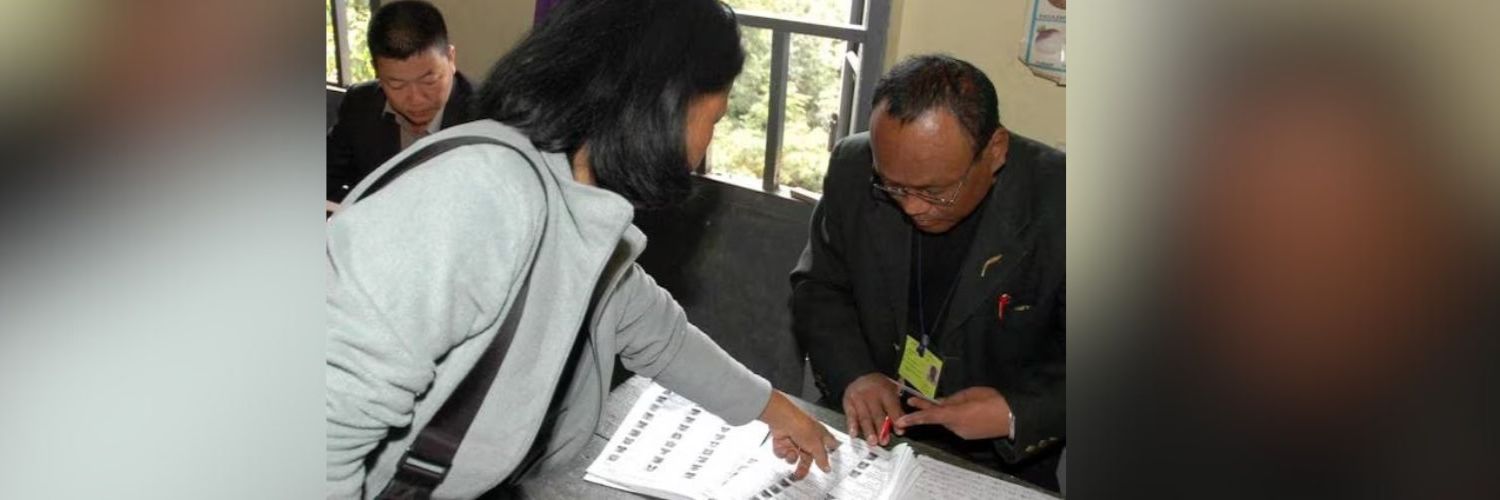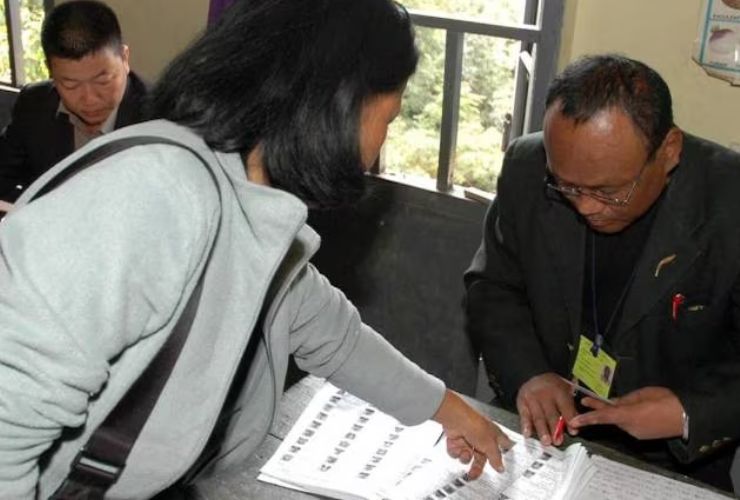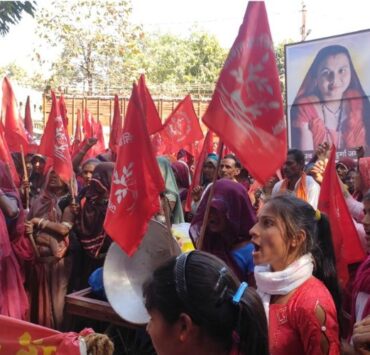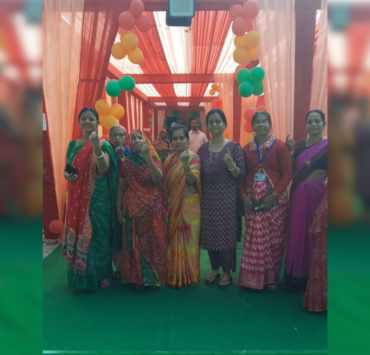
By Ninglun Hanghal

There has been a positive churning in electoral politics in northeastern India in recent years. Women are slowly but surely making their way into state Legislative Assemblies as elected members (MLAs). Although the numbers are still relatively small and the quality of their participation in the legislatures yet to be experienced, let alone assessed, it is nevertheless a sign that women are now entering the traditionally male bastion of politics.
Here is a sneak-peek into the results of recent state elections in the northeast region.
In the just concluded 2023 state election in Mizoram, three women won seats in the Assembly: Baryl Vanneihsangi and Lalrinpuii of the Zoram Peoples’ Movement (ZPM) and Prova Chakma of the Mizo National Front (MNF). Three female MLAs in one go is a landmark for a state that has seen a total of only three women in the legislature since 1978. Mizoram has 40 Assembly seats and one Lok Sabha seat. Lalrinpuii has also become the state’s first woman minister of cabinet rank; her two predecessors in the state cabinet – Lalhlimpuii Hmar and Vanlalawmpuii Chawngthu – were both ministers of state.
Less than a year ago, during the 2023 elections in Nagaland, women made a huge leap, creating history. In a state that had never seen any women in the Assembly or local bodies, two women – Hekani Jakhalu and Salhoutuonuo Kruse of the National Democratic Progressive Party (NDPP) – broke the glass ceiling and made their entry into the hitherto “all men’s club” as the first two female members of the state Legislative Assembly. Salhoutuonuo Kruse went on to become the first woman minister in the state, handling the portfolios of Women Resource Development and Horticulture. Nagaland has 60 Assembly seats and one Lok Sabha seat. History was also made in 2022, when Phangnon Konyak of the Bharatiya Janata Party (BJP) was nominated to the Rajya Sabha, becoming the first woman from the state to occupy a seat in the upper house of Parliament.
Two years earlier, during the 2022 polls in Manipur, five women were elected to the state Assembly: Nemcha Kipgen, SS. Olish and Soraisam Kebi of the Bharatya Janata Party (BJP), Nalini Devi of the National Peoples Party (NPP) and Kimneo Hangshing of the Kuki People’s Alliance (KPA). Five female members in the state legislature during the same term was a record here, too, even though Manipur has previously had one or two women MLAs in the Assembly at the same time. Nemcha Kipgen is a second time cabinet minister, holding the portfolios of Textile, Commerce and Industry in the present government. Manipur, too, has 60-seat Assembly and but it has two Lok Sabha seats.
The 2023 state elections in Meghalaya brought three women into the Legislative Assembly: Santa Mary Shylla and Ampareen Lyngdoh of the National Peoples Party (NPP), and Miani Shira of the All India Trinamool Congress (AITC). In 2018, too, three women had won the state elections. Interestingly the ruling NPP has announced that it will file only a female candidate for the upcoming parliamentary election. The state has 60 legislative seats and two Lok Sabha seats. One of the present MPs is a woman, Agatha Sangma of the NPP, who has been elected twice and is a former minister of state for Rural Development.
Tripura has been doing relatively well in terms of women’s representation in politics for a while, unlike other states in the region. The 2023 state elections brought eight female MLAs into the Assembly: Swapna Debbarma, Swapna Majumdar and Nandita Debbarma of the Tripra Motha Party (TMP), and Mina Rani Sarkar, Antara Sarkar Deb, Kalyani Saha Roy, Swapna Das Paul and Santana Chakma of the BJP. This represents the highest number of women legislators in Tripura since it became a full-fledged state in 1972. In 2013 five women became lawmakers in the state, while in 2018 only three women made it to the Assembly. Tripura also has a 60-seat state Assembly and two Lok Sabha seats. One of the two current MPs is a woman: Pratima Bhoumik, who is currently minister of state in the Union Ministry of Social Justice and Empowerment.
The 60-seat state Assembly of Arunachal Pradesh has four women MLAs: Chakat Aboh (Independent), and Dasanglu Pul, Gum Tayeng, and Jummum Ete Deori of the BJP. The state has two Lok Sabha seats.
Sikkim is also not doing too badly. The 32-seat state Assembly has three women: Sunita Gajmar of the Sikkim Krantikari Morcha (SKM), and Farwanti Tamang and RajKumari Thapa of the BJP.
Assam, with 125 Assembly seats, has only five women legislators: Nandita Das of the Congress, Ajanta Neog, Nandita Garlosa and Suman Haripriya of the BJP, and Renupoma Rajkhowa of the Asom Gana Parishad (AGP). The state has had one to three female MLAs in the Assembly after every election but, compared to other NE states, that does not amount to much given that the state has over a hundred Assembly seats. Assam has 14 Lok Sabha seats; at present it has only one female MP, Queen Oja of the BJP. Although the numbers have been small, Assam has had one or two women in the Lok Sabha for some time.
In northeastern states, it is a common scene that during polling – for local, state or general elections – women come out in large numbers to exercise their franchise. In fact, there are more female than male voters in most of the states, including Arunachal Pradesh, Mizoram, Nagaland, and Manipur.
It can be said that women play a huge role in electoral politics in the region. Their votes are important for the numbers game. They are active campaigners and work hard for candidates they support. Even though most of them may not themselves contest elections, in many ways it is women who do a lot of the political work during election seasons. Many are party workers and many others are supporters of either a party or an individual candidate.
In recent times it appears that candidates primarily focus on female voters. A lot of attention is paid to how to woo the women’s vote through welfare measures or schemes specially tailored for women. It is also said that women voters tend to vote in large numbers once they are convinced about a party and/or candidate. It is another matter that the promises often disappear after the election, with women being left behind, forgotten, and men deciding on which welfare measures and schemes are actually implemented.
It is no mean feat for women to win elections. One of the common challenges they face is the lack of financial resources and muscle power. Funds are required for basic campaign expenditure, including transport- not necessarily for lavish spending or buying votes. Economics is a crucial factor in women’s empowerment. Without financial independence, it is just impossible for women to enter public life.
In north-east India, traditions and customs play a major role as a roadblock for women to come out and fight elections. Tradition and customary practices often result in women taking the back seat. Traditionally, women have been “supporters and backbones” for the male members of the family and the community; thus, the same role is expected in socio-political spaces.
Customarily (with a few exceptions), most women in the region do not inherit parental/ family property. This is seen to be changing, with parents increasingly sharing some of their property or assets with daughters. However, such bequests are considered gifts, not inheritance, and in many cases, this happens only if there is no son or other male heir.
Such small changes can also be seen in politics, where daughters of politicians have begun to follow in their fathers’ footsteps. However, even when this happens, in the majority of cases the daughter is not necessarily the first choice.
As women become more educated and earn income for themselves, it gives them an edge to pursue their interests or careers. Education and financial independence play a key role in women’s political careers. However, family support remains a major factor for enabling women to pursue a political career; and such support is slowly emerging.
Women’s representation in local-level politics and institutions of local self-government, which is visible in states like Tripura and Mizoram, and has received a boost thanks to Nagaland’s recent, historic decision to announce reservations for women in local elections, can certainly help increase women’s participation in electoral politics.
The current trends are encouraging and help create a positive outlook about women coming into their own in politics in the northeast of India.
Ninglun Hanghal is a freelance journalist. She is former Delhi Correspondent of The Sangai Express and is at present the consulting editor of The Northeast Stories, an online e-magazine. She writes regularly on women, development and current affairs of Manipur and Northeast India.
Related:
Will Mizoram elect women legislators this time? – NWM India
Nagaland passes historic legislation – NWM India
A ‘Yes, we can’ moment – NWM India
Tripura loves the woman voter. Not so much the woman politician – NWM India
Women, media and elections in Nagaland – NWM India




